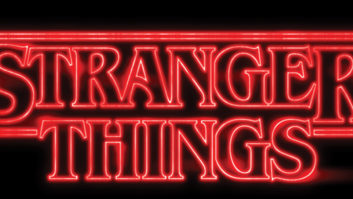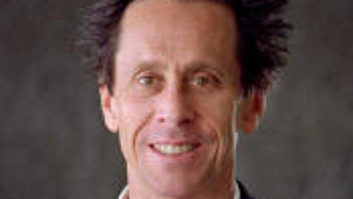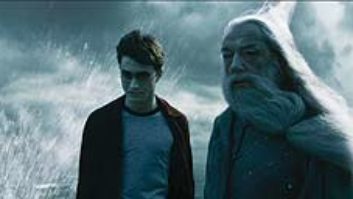The sonar ping of a submarine is something of a staple in the annals of film sound, one that any filmgoer can summon on command from the collective memory of everything from Das Boot to Yellow Submarine. Hatch doors, engine rumbles, dive commands shouted in a confined, metallic space — they all help to form a submarine’s signature sound. Nowadays, however, with compact, portable technology, a sound designer can find subtlety and realism in a more diverse palette of sounds recorded, ideally, on an actual conveyance. That is, if the sub commander doesn’t mind taking a test drive or launching a torpedo on the sound designer’s behalf.
With K19, Paramount’s submarine thriller directed by Kathryn Bigelow and starring Harrison Ford and Liam Neeson, there are no chase scenes or exchanges of fire to punctuate the action. The story is driven by character-based conflicts that take place within the confines of the sub. That means a more limited palette of sounds and images, along with an even greater burden of authenticity.
BRINGING DEPTH TO THE SUB
“It’s very difficult to get a sense of space in an enclosed [environment] like a submarine,” says picture editor and re-recording mixer Walter Murch. “If it’s not lit and art-directed right, everything just sort of blocks up.”
Consequently, Bigelow was very conscious of overall scene composition and placement of actors. “There’s always somebody deep in the scene,” says Murch, “either looking at Liam Neeson and Harrison Ford having an argument or doing a job.” This depth and dimensionality, so crucial to the drama, was something Murch and the crew looked to match in the sound.
With the Foley, for example, it became clear early on that the traditional method of recording on a stage might not do justice to Bigelow’s deep and often complex visuals. Larry Schalit, co-supervising sound editor on K19, along with longtime Murch collaborator Pat Jackson, recalls how a few steps recorded aboard a retired World War II submarine at San Francisco’s Fisherman’s Wharf ushered in a stampede of location Foley.
“Pat recorded some wild [tracks] for a temp,” says Schalit. “The sound of it was just unique. Walter loved it, Kathryn loved it. The next step was, ‘Okay, now we’re going to go downstairs on the Foley stage [at the Saul Zaentz Film Center] and do a series of surface tests.’ We listened to it and nobody was excited. Walter listened to it and wasn’t happy either.”
Schalit eventually masterminded a traveling Foley setup, always keeping in mind the integrity of the Foley stage. A recent example of location Foley — that of Ren Klyce, Malcolm Fife and Eric Dachs on Panic Room — loomed large. “What they had done was gone to the set and recorded LCR to a Deva, loaded it all into Pro Tools, named every take, put them in the correct tracks and checked sync before the editor could even begin to work. We didn’t have the resources or the time to do it that way,” says Schalit.
Although the K19 budget allowed them to swap some Foley stage time for days aboard the San Francisco-based U.S.S. Pampanito, Murch’s requirement of credible footsteps from the location now entailed a reconstruction of the conditions of the stage in order to bring it in on time, “by recording to Pro Tools as spotted,” says Schalit, “in stereo [no less] with an auto-naming Quick Key designed by Foley supervisor Larry Oatfield.”
DOWN THE HATCH
“The thing was how to get a rig into the sub,” says Schalit. “Originally, I thought, ‘Okay, we’ll build it into a rackmount system and roll it around.’ But Pat [Jackson] had already been on the sub and said, ‘It’s not going to fit through the hatches.’ We realized that what we had to do was build a system we could carry down in bags, set up on little trays, then tear down and move to another compartment pretty quickly.”
As in Murch’s early days [see sidebar], budgetary constraint became the mother of invention. “The company wasn’t giving us the money to build our ideal rig. So the next thing was, ‘What can we use that we have available?’ The system that was put together was a lot of bits and pieces of equipment from various members of the crew,” says Schalit.
The main components of the system were a stereo Neumann RSM190 microphone from sound editor Doug Murray, Schalit’s G3 Powerbook and a setup to play digital picture from Pro Tools to a monitor for the Foley artists, Margie O’Malley and Marnie Moore.
For this latter requirement — one that has frustrated many in the quest for a compact mobile workstation — Schalit benefited from his contact with Panic Room sound editor Eric Dachs. “We didn’t want to install a video card or any additional hardware,” Schalit says. “Dachs was using a DV format file and outputting it through a DV deck. What we did was digitize the Beta tapes to Oatfield’s mini-DV player, then load them through FireWire to a compact 80-gig drive using iMovie. Because the file size is limited to 2 Gigs, which is less than nine minutes, we had to break the picture files for each reel into two or three parts.
“When we played them out of Pro Tools, I’d be playing a movie file through a FireWire cable to a mini-DV deck. Then we’d take the NTSC signal and send it to two monitors. To get the video to actually play out of the Firewire, there’s a utility called Echofire, which is an essential part of the setup.”
The system still had two slight hitches. “The first thing we discovered was this DV latency,” he says. “A delay, in other words, in outputting and converting digital video to an NTSC signal unique to a given system.” More trial and error followed as they advanced the picture in Pro Tools until it matched up with the audio guide track. “Once you figure it out,” Schalit says, “it’s always the same, it doesn’t drift. In our case, it was six-and-a-half frames.”
A PRO TOOLS MINI-SAGA
The other challenge was to figure out a simple way to record into Pro Tools. “The first option was to get a mic preamp and an A/D converter/audio interface, but these are kind of bulky,” Schalit says. “Then ‘Bear’ [assistant editor, Chris Barrick] found out about this USB preamp by Sound Devices, a tiny little box that is a mic preamp and an A/D converter that converts its signal through the USB port and is powered by USB.
“The key is that you don’t use any Digidesign hardware. The USB pre has its own control panel that integrates with the Sound Manager, which means you’ve got to use a version of Pro Tools that gets its signal that way,” he says.
Schalit and his team — which included Oatfield, assistant Brian Chumney and apprentice Ken Wright — had a minor saga in finding a version that could be tailored for a traditional Foley session. Pro Tools Free, the version on which Sound Devices had modeled its preamp, was quickly ruled out. “It only has eight tracks and you don’t have a footage counter or timecode,” says Schalit. “I had to go back to a version called Pro Tools 4.3 with Powermix.”
That created another problem, as all the extensions had to be set just so. “You can’t have Appletalk on,” Schalit says, “and you don’t want to have any Ethernet polling either.”
With that out of the way, they were ready to begin the session — or so they thought. “As we recorded the first pass, I monitored it off the USB pre on headphones, and it sounded great. But when I played it back off of the laptop, it sounded incredibly noisy. I realized that every time I launched Pro Tools, I had to reset the Sound Manager to be looking for the USB pre as its input. Essentially, what I’d been doing was recording through the built-in microphone on the laptop.”
ENEMY FIRE TO STARBOARD
As the tests proved, the Pampanito was an excellent facsimile for the K19, and with the accustomed gear now in place, Moore and O’Malley soon took to their new surroundings. “I absolutely love the way stuff sounds,” says Moore. “The hard part is the waiting.”
“The problem,” says Schalit, “is the noise coming from the outside: gulls and sea lions, people with music, public address systems and passing ferries.” The real world, in this case, had about 50% the efficiency rate of the hermetically sealed Foley stage. This is not a figure to put much joy in a producer’s heart. but one which, to the most discerning ears in the world, proved more than sufficient to justify the effort.
“You get a fantastic sense of the dynamics,” Murch says, “of a series of people moving in a real space, which is almost impossible to match. You’d have to spend so much time mixing the Foley to duplicate that you’d easily treble the budget of trying to record it on location.”
In addition to informing the overall sound design of this story, the Foley done on the sub allowed Moore and O’Malley to bring more complexity to the work they eventually did on the stage. “They walked much looser,” says Schalit. “They opened things up more and went for a sound that was much closer to what was done on the sub.”
With all the trouble involved, the question remains just how much real-world Foley is needed in order to satisfy the requirements of an A-list sound crew. “It’s a delicate balance,” says Murch. “The equivalent in cooking would be balancing the economics of how much fresh ingredients do you use and how much canned or pre-cooked. You have to be careful that the pre-cooked stuff doesn’t overwhelm the fresh ingredients, that the fresh ingredients are always dominant.
“If you did everything fresh,” he says “that’s wonderful, but you might put the price of the meal up so high that you’re going to go out of business.”
For films like K19 and Panic Room, where the filmmakers see fit to hire the best, going out of business seems highly unlikely, and as K19 opens its doors for public consumption, it would appear that K19, Murch and the sound team may have come up with the perfect recipe.
Michael Axinn has worked on more than 20 feature films, in roles from assistant to supervising sound editor, including, most recently, Episode II.
WALTER MURCH ON DIY FOLEY
“When I started working on features,” says Walter Murch, “the idea of doing Foley was very exotic and nothing that we could afford. On The Rain People, Francis [Coppola] was shooting on location with the actors, and they were traveling across the country. At the end of the day, he would ask the actors to walk through all of the moves they made without saying anything. On THX [1138, George Lucas’ first feature], I would put the Nagra somewhere and walk around duplicating the footsteps in a real space. We did versions of that on The Conversation and American Graffiti.
“On Godfather II,” Murch continues, “we’d figure out the rate at which the principal was walking, and we had a little portable electronic metronome, which we would set at that frame rate. I remember doing the footsteps for Fanucci where he comes up the stairs before he’s killed by DeNiro [young Vito Corleone], and we found the marble staircases in the old Zoetrope building were very much like the staircases in that actual location. So, I set the metronome and I had my assistant at the top. I walked a couple of flights up, so you hear these footsteps coming from far away. They get closer and closer, which is the whole idea of the scene, and then I stopped, as Fanucci stopped, at the top. I said Fanucci’s next line, and when we took the track and sunk it up, all of the footsteps sunk up. On the Foley track, you can hear my voice, and it exactly syncs with the lips of Fanucci.”
“K19” CREW
Supervising sound editor: Pat Jackson
Co-supervising sound editor: Larry Schalit
FX editors: Kyrsten Mate Comoglio, Douglas Murray, Aura Gilge
ADR supervisor: Mark A. Levinson
Dialog editor: Dianna Stirpe
ADR editor: Michael Silvers
Foley editor: E. Larry Oatfield
Assistant sound editors: Christopher “Bear” Barrick, Brian Chumney
Apprentice sound editor: Kendrick Wright
Sound FX recordist: Dan Gleich
Re-recording mixers: Walter Murch C.A.S., Mark Berger, Gary Summers
Additional re-recording: David Parker
Foley artists: Margie O’Malley, Marnie Moore







